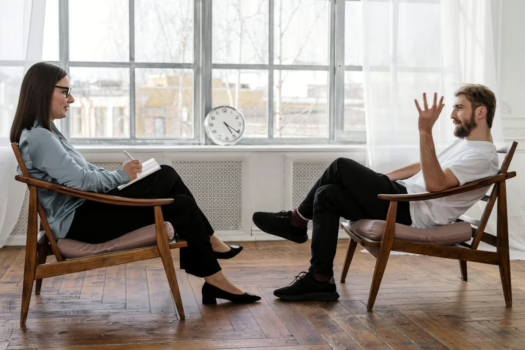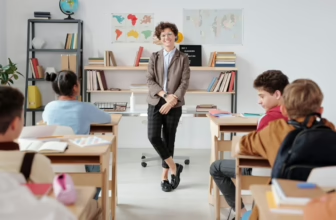Therapy is often seen as the go-to solution when you’re struggling with your mental health. People say things like, “You should talk to someone,” or “Therapy changed my life.” And for some, that’s true. But for many others—especially those who are disabled, neurodivergent, or part of a marginalized group—traditional therapy just doesn’t feel right.
If you've ever sat in a therapist's office and left feeling worse—or felt like you had to explain your identity just to be heard—you’re not alone. The truth is that traditional therapy wasn’t built with everyone in mind. In this article, we’ll look at why that is and what other options exist. The good news? You have more choices than you might think.
The Limits of the Traditional Therapy Model
Traditional therapy usually means sitting in a quiet office for 50 minutes and talking about your feelings. It follows a structure that’s been around for decades. But just because it’s common doesn’t mean it works for everyone.
For neurodivergent people, the unspoken rules in therapy can be confusing. You might be expected to maintain eye contact, sit still, or respond in a certain way. If you don’t, you might be misunderstood. For disabled clients, physical spaces may be inaccessible. Even if you can attend, some therapists lack experience with chronic illness or disability, which makes it hard to connect.
Then there’s the issue of cultural understanding. Many therapists aren’t trained to work with clients from different racial, gender, or cultural backgrounds. If you’re LGBTQ+, BIPOC, or disabled, you may end up having to educate your therapist before you can even talk about what you came for. That’s exhausting.
Therapists are not always trained to recognize systemic issues like ableism or racism, and that creates a power imbalance. You might leave feeling invalidated or even harmed.
Some programs are working to improve how future psychologists serve diverse clients. APA accredited online PsyD programs — specifically, hybrid formats with in-person clinical training—focus more on hands-on experience than research. These programs are designed to prepare students for real-world clinical settings, which may lead to more practical, client-centered care than traditional academic models.
The Role of Lived Experience in Healing
There’s something powerful about talking to someone who gets it—not just from books, but from life. A therapist who has never been disabled, chronically ill, or marginalized in any way might not fully understand what you’re going through. Even with good intentions, that disconnect can leave you feeling isolated, or worse, misunderstood.
This is why many people turn to peer support. It can be more validating to talk to someone who’s been through similar challenges. Whether it’s a peer-led support group or a mental health advocate with lived experience, these spaces often feel more supportive and real, with less pressure to explain or justify your reality.
Some people find healing not in traditional therapy but in connecting with others who have walked a similar path. These connections often offer understanding, empathy, and shared tools for coping that you won’t always find in a clinical setting. That sense of shared experience can be just as healing as any formal therapy session.
Exploring Alternatives That Center the Individual
The good news is that therapy is not the only option. Mental health support can take many forms, and what works best often depends on the person. There is no one right answer—and that’s okay.
Group therapy with people who share your experiences can be incredibly helpful. It offers both support and community and can reduce feelings of isolation. Community-based mental health programs often center on inclusion and accessibility and are more open to alternative forms of care.
Then, there are body-based therapies like art, music, or movement therapy. These can help people who don’t feel comfortable talking or who process emotions in different ways. For some, these methods feel safer and more natural. They allow expression without needing the “right” words.
Peer counseling and coaching are also valid forms of support. They may not follow the same model as licensed therapy, but they can be just as effective—especially when they focus on empowerment, self-advocacy, and real-life coping strategies.
Some people mix and match. They might have a peer support group, see a somatic therapist, and occasionally consult a psychologist. That’s totally valid. You’re allowed to build a mental health support system that actually works for you—even if it looks different from what others are doing.
What to Look for in a Supportive Mental Health Option
If you’re exploring new options, here are a few things to keep in mind:
- Look for professionals who respect your identity and don’t treat it as a problem to fix.
- Ask about their experience with disability, trauma, neurodivergence, or whatever’s important to you.
- Pay attention to how they communicate. Do they listen without judgment? Do they make you feel heard and supported?
- Accessibility matters. Can you access their space? Do they offer virtual sessions? Are their materials easy to understand?
- Trust your gut. If something doesn’t feel right, it’s okay to move on. Finding the right fit is part of the process and can take time.
There are also online directories where you can search for therapists by identity, specialization, or lived experience. Some collectives are run by disabled or neurodivergent providers and focus on care that honors your whole self—not just your diagnosis. These spaces can feel much safer and more affirming than mainstream options.
Traditional therapy can be helpful for some, but it’s not the only way. If you’ve felt like it didn’t work for you, that doesn’t mean something’s wrong with you—it means the model wasn’t built with your needs in mind.
You deserve support that meets you where you are. Whether that’s through peer counseling, group support, body-based therapy, or a more inclusive therapist, there are options out there. You don’t have to stick with something that doesn’t feel right just because it’s considered “normal.”
The most important thing is to keep exploring until you find what feels right. Healing isn’t linear, and it doesn’t have to follow one path. What matters is that it works for you—not that it fits someone else’s idea of what therapy should look like.
Follow me down the rabbit hole!
I'm Alice and I live with a dizzying assortment of invisible disabilities, including ADHD and fibromyalgia. I write to raise awareness and end the stigma surrounding mental and chronic illnesses of all kinds.








